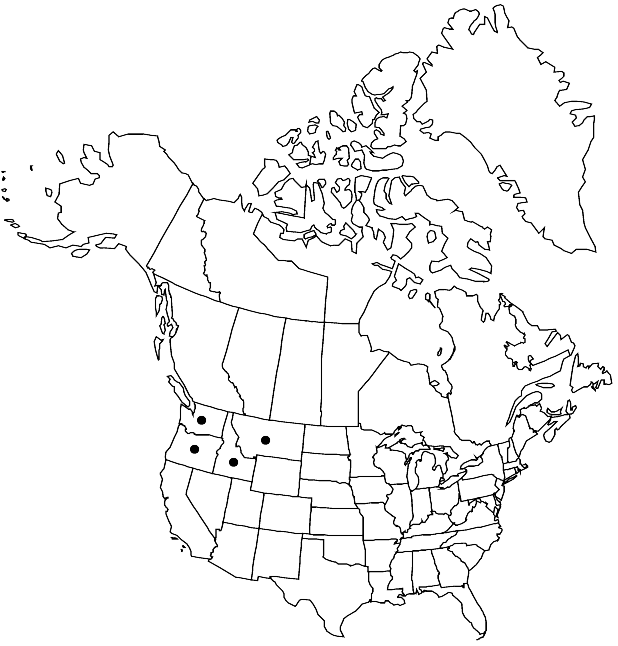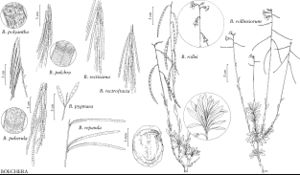Boechera polyantha
Harvard Pap. Bot. 11: 78. 2006.
Perennials; usually short-lived; sexual; caudex not woody. Stems usually 1 per caudex branch, arising from center of rosette near ground surface, 2.5–9 dm, densely pubescent proximally, trichomes short-stalked, 2–6-rayed, 0.1–0.7 mm, similarly pubescent distally. Basal leaves: blade oblanceolate, 1.5–7 mm wide, margins entire or shallowly dentate, ciliate at petiole base, trichomes to 0.9 mm, surfaces densely pubescent, trichomes short-stalked, 5–10-rayed, 0.1–0.25 mm. Cauline leaves: 16–42, concealing stem proximally; blade auricles 0.5–1.5 mm, surfaces of distalmost leaves pubescent. Racemes 17–96-flowered, usually unbranched. Fruiting pedicels reflexed, abruptly recurved at base, otherwise straight, 7–13 mm, pubescent, trichomes appressed, branched. Flowers descending at anthesis; sepals pubescent; petals white, 6–9 × 1–2.5 mm, sparsely pubescent abaxially; pollen ellipsoid. Fruits strongly reflexed, usually appressed to rachis, sometimes somewhat secund, straight, edges parallel, 3.5–7.2 cm × 1.2–1.5 mm; valves densely pubescent; ovules 74–110 per ovary; styles 0.05–0.2 mm. Seeds uniseriate, 0.9–1.2 × 0.7–1 mm; wing continuous, 0.05–0.1 mm wide.
Phenology: Flowering late Apr-early Jun.
Habitat: Rocky, gravelly, and sandy slopes in open areas
Elevation: 900-2500 m
Distribution

Idaho, Mont., Oreg., Wash.
Discussion
Boechera polyantha is closely related to B. retrofracta, but is easily distinguished by densely pubescent fruits and scattered trichomes on abaxial petal surfaces.
Selected References
None.
